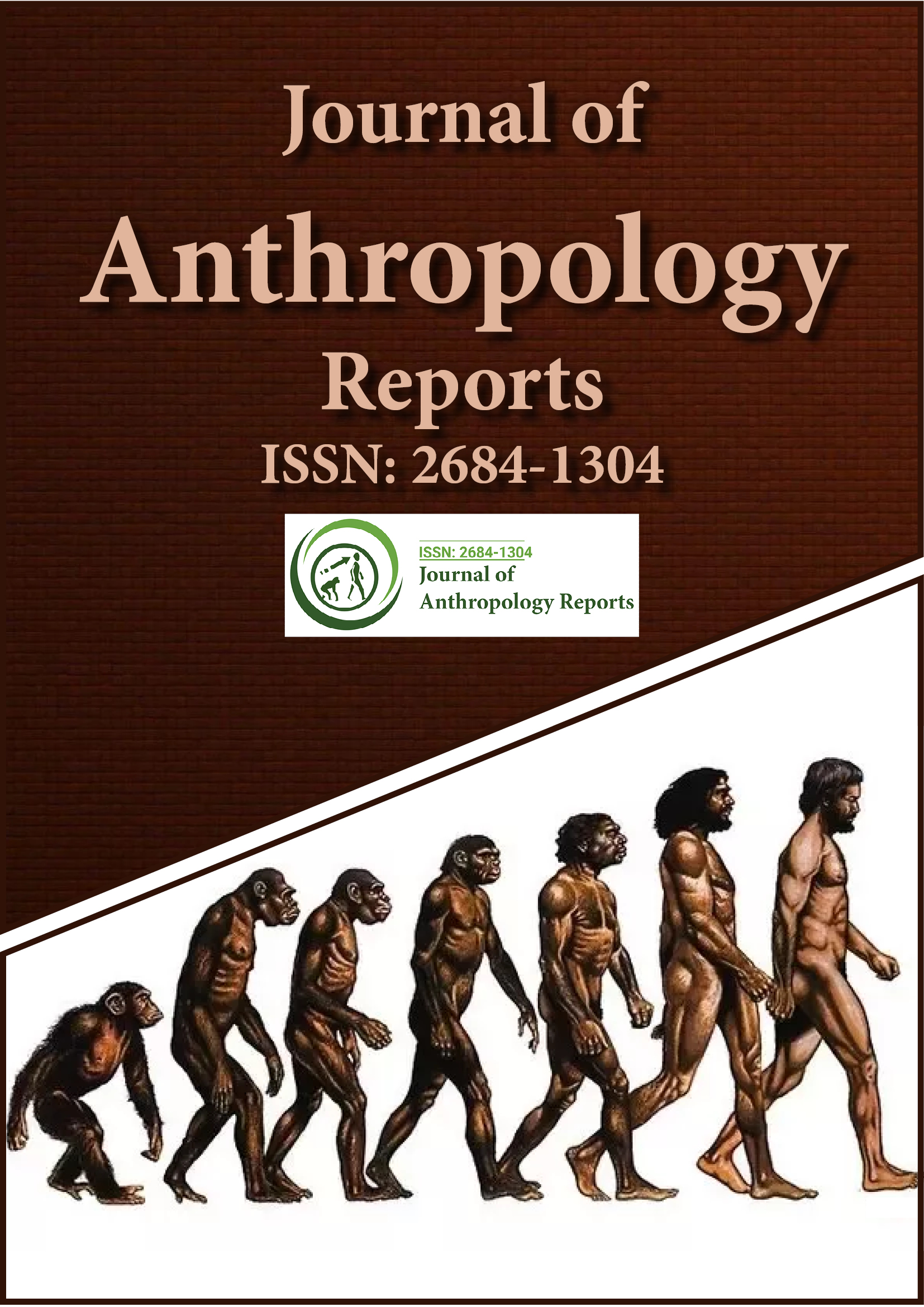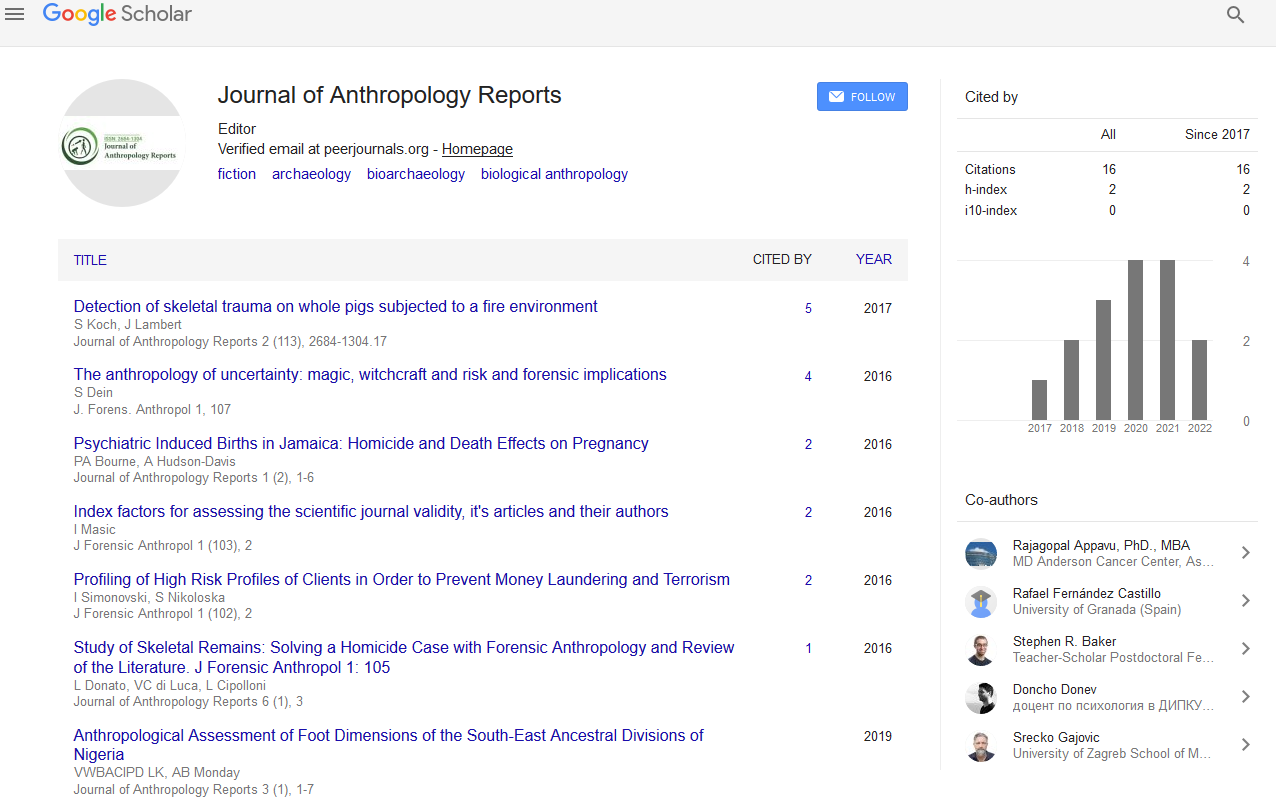Indexed In
- RefSeek
- Hamdard University
- EBSCO A-Z
Useful Links
Share This Page
Journal Flyer

Open Access Journals
- Agri and Aquaculture
- Biochemistry
- Bioinformatics & Systems Biology
- Business & Management
- Chemistry
- Clinical Sciences
- Engineering
- Food & Nutrition
- General Science
- Genetics & Molecular Biology
- Immunology & Microbiology
- Medical Sciences
- Neuroscience & Psychology
- Nursing & Health Care
- Pharmaceutical Sciences
Opinion Article - (2023) Volume 6, Issue 2
Molecular Biological Approach in Forensic Anthropology
Travis M. Steffens*Received: 20-Jun-2023, Manuscript No. JFA-23-21912; Editor assigned: 22-Jun-2023, Pre QC No. JFA-23-21912 (PQ); Reviewed: 06-Jul-2023, QC No. JFA-23-21912 (QC); Revised: 13-Jul-2023, Manuscript No. JFA-23-21912 (R); Published: 21-Jul-2023, DOI: 10.35248/2684-1304.23.6.161
Description
Forensic anthropology has recently utilized molecular biology. Before the 1980s, only serological analyses of protein polymorphism, blood groups, and a few genetic markers were used to identify criminal cases. Criminological assessment of natural examples began in the start of the twentieth 100 years by utilization of the ABO blood bunch framework in confirmations connected with violations or human identification. In 1953, the double-helix structure of DNA, which is how genes are passed down through a person's lineage, was discovered. This had a big effect and changed nearly every area of science. Techniques that enable characterizing each person's uniqueness based on the DNA sequence have been developed on the basis of this knowledge.
After three decades, made radioactive sub-atomic tests that could perceive specific profoundly delicate districts of DNA and decide explicit examples of every person, which were named DNA "fingerprints". The as of now performed DNA profile tests are entirely solid, being acknowledged as lawful evidences in courts for examination of paternity and human recognizable proof. There are numerous adequate strategies for human identification, everyone with its limits. Since ancient times, fingerprints have been used to identify individuals. Not with standing, in certain circumstances (for example in flames, disintegrating bodies or skeletonized bodies), fingerprints are effectively obliterated.
As a result, genetic tests have been recognized as an essential and trustworthy resource for forensic anthropology. Hairbrush, toothbrush and different objects of individual use might contain material that can be utilized for examination. In any case, just the presence of hair or oral cells doesn't give all components important to identification. Similar to dactyloscopy, advanced sample processing and a prior registration or available offspring are required for DNA fingerprint molecular typing techniques to be useful for human identification or crime solving. Besides, albeit the humanities examination can give valuable data about height, race and orientation, it doesn't decide somebody's personality. Because it can work with the human body in a variety of conditions (quartered, lacerated, carbonized, macerated, putrefied, in the skeletonization process, and skeletonized), postmortem human identification is one of the most important areas of study in forensic dentistry.
Atomic science's devolpement has brought new methods, materials, and perspectives to modern legal dentistry, but it also comes with some limitations. In order to help the family and the legal system, Sweet states that since every person has an identity throughout their existence, it is essential for society as a whole for this identity to be recognised upon death.
Since a person should be identified, even in a suicide case, human identification has legal implications and is part of the investigation process. Therefore, the following is a list of the technical requirements of human identification techniques for any recommendation: uniqueness (distinguishing proof components ought to permit an exact and clear differentiation between the thought and the others); immutability (the analyzed characteristics ought not to change over time); perenniality (the broke down elements ought to be available all through the life); practicability (protected and fast method for assortment of recognizable proof information to try not to make imperative for the distinguished individual and permitting a decent security and dependability degree); classification (it should be able to quickly distinguish a subject from a population by allowing a synthetic and accurate comparison of the collected data); and reproducibility, which is the capacity to reproduce the same technique at any time, in the same conditions.
Only a small number of methods, such as dactyloscopy, dental arch identification, and genetic identification tests (with the exception of identical twins with the same genetic load), meet all of these ideal conditions for human identity research, according to a critical analysis of these conditions.
Other tests include the analysis of the palatal rugae pattern, which is a less common but easy-to-perform method that does not provide a clear classification; also, biometric tests, which incorporate examples and correlation of iris, voice, retina, and mark. It is essential to emphasize the distinction between recognition and identification when discussing human identity.
Although the term "recognition" refers to an empiric identification made by family, friends, or coworkers without the use of scientific criteria, "identification" refers to the application of well-established scientific knowledge and methods.
There are two ways to identify a person: a comparison and a reconstruction. The first is based on antemortem evidence, which enables medical and dental records to identify individuals.
In the reconstructive cycle, it is beyond the realm of possibilities to expect to utilize these information and it is important to make general recognizable proof by characterizing orientation, age and race. The integration of molecular biology and forensic anthropology has significantly enhanced ability to identify individuals, solve criminal cases, and provide closure to families and the legal system. The continuous advancements in forensic techniques continue to support the societal need for recognizing individual identity even after death, making human identification an essential aspect of forensic investigations.
Citation: Steffens TM (2023) Molecular Biological Approach in Forensic Anthropology. J Anthropol Rep. 6:161.
Copyright: © 2023 Steffens TM. This is an open-access article distributed under the terms of the Creative Commons Attribution License, which permits unrestricted use, distribution, and reproduction in any medium, provided the original author and source are credited.

